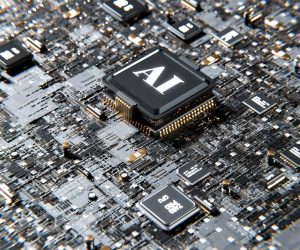MIT Unveils Generative AI to Revolutionize Databases
Discover how MIT’s generative AI is set to transform database management. Explore the future of data with us today!
Introduction to Generative AI for Databases
The Role of Generative AI in Databases
Generative AI, a subset of artificial intelligence, is revolutionizing the way databases are managed and utilized. By leveraging advanced algorithms, generative AI can automate complex database tasks, enhance data retrieval processes, and optimize data management.
This technology is particularly beneficial in handling large volumes of data, ensuring accuracy, and reducing the time required for data processing.
MIT’s Contribution to Database Innovation
Researchers at MIT have been at the forefront of integrating generative AI with databases. Their innovative approaches focus on creating AI models that can understand and generate data structures, making databases more efficient and intelligent.
By introducing these AI-driven models, MIT aims to transform traditional database systems into dynamic, self-improving entities that can adapt to changing data needs.
Benefits of Generative AI for Database Management
The integration of generative AI into databases offers numerous advantages. One of the primary benefits is enhanced data accuracy, as AI models can identify and correct anomalies within datasets.
Additionally, generative AI can significantly reduce the workload on database administrators by automating routine tasks such as data entry, indexing, and query optimization.
Moreover, generative AI facilitates better decision-making by providing insights derived from complex data patterns. This capability is crucial for businesses that rely on data-driven strategies to maintain a competitive edge in their respective industries.
Challenges and Considerations
While the potential of generative AI in databases is immense, there are challenges that need to be addressed.
One major concern is data privacy and security, as AI systems require access to vast amounts of data to function effectively. Ensuring that these systems comply with data protection regulations is paramount.
Additionally, the integration of AI into existing database systems can be complex and may require significant changes to current infrastructure.
Organizations must weigh the benefits against the costs and potential disruptions when considering the adoption of generative AI technologies.
Benefits of MIT’s AI Database Innovation
Enhanced Data Management
MIT’s introduction of generative AI for databases revolutionizes data management by automating complex processes. This innovation allows for efficient organization and retrieval of vast amounts of data, reducing the time and effort required from human operators.
The AI-driven system can adapt to various data structures, ensuring seamless integration and management across different platforms.
Improved Query Performance
One of the standout benefits of MIT’s AI database innovation is the significant improvement in query performance. By leveraging generative AI, databases can anticipate and optimize queries, leading to faster response times and more accurate results.
This enhancement is particularly beneficial for businesses that rely on real-time data analysis to make informed decisions.
Cost Efficiency
The implementation of AI in databases can lead to substantial cost savings. With automation handling routine tasks, organizations can reduce the need for extensive human intervention, lowering operational costs.
Additionally, the improved efficiency and speed of data processing translate to better resource utilization, further contributing to cost efficiency.
Scalability
MIT’s AI database innovation offers unparalleled scalability. As data volumes grow, the AI system can seamlessly scale to accommodate increased demands without compromising performance.
This scalability ensures that businesses can continue to expand their data operations without the need for frequent infrastructure upgrades.
Enhanced Security
Security is a critical concern for any database system, and MIT’s AI innovation addresses this by incorporating advanced security protocols. The AI can detect anomalies and potential threats in real-time, providing an additional layer of protection against cyberattacks.
This proactive approach to security helps safeguard sensitive information, maintaining the integrity and confidentiality of data.
Applications of Generative AI in Databases
Automated Data Cleaning
Generative AI offers innovative solutions for automated data cleaning, a crucial process for maintaining the integrity and accuracy of databases. By leveraging machine learning algorithms, generative AI can identify and correct errors, fill in missing values, and resolve inconsistencies in large datasets.
This reduces the time and effort required for manual data cleaning, allowing database administrators to focus on more strategic tasks.
Data Synthesis and Augmentation
One of the remarkable applications of generative AI in databases is data synthesis and augmentation. MIT researchers have developed models that can generate synthetic data that mimics real-world data distributions.
This capability is particularly useful for creating large datasets for training machine learning models or testing database systems without compromising sensitive information.
By augmenting existing datasets with synthetic data, organizations can enhance the diversity and volume of their data, leading to more robust and accurate analytical models.
Query Optimization
Generative AI can significantly improve query optimization processes in databases. By analyzing historical query patterns and database structures, AI models can predict the most efficient query execution plans.
This leads to faster query responses and reduced computational resources, enhancing the overall performance of database systems.
MIT researchers are exploring how generative models can dynamically adapt to changing database environments, providing real-time optimization that evolves with the database’s usage patterns.
Natural Language Interfaces
Generative AI is transforming how users interact with databases through natural language interfaces. By understanding and processing natural language queries, AI models can generate SQL queries or other database commands, making it easier for non-technical users to access and manipulate data.
This democratizes data access, empowering more users to derive insights from complex databases without needing specialized query language knowledge.
Anomaly Detection and Security
In the realm of database security, generative AI plays a pivotal role in anomaly detection. By learning the normal patterns of database interactions, AI models can identify unusual activities that may indicate security breaches or fraud.
This proactive approach to security allows for real-time monitoring and alerts, helping organizations protect sensitive data from unauthorized access and potential threats.
Future Implications of AI Database Technology
Enhanced Data Processing Efficiency
The introduction of generative AI for databases by MIT researchers promises significant improvements in data processing efficiency. AI algorithms can automate complex queries and optimize data retrieval processes, reducing the time and computational resources required.
This advancement could lead to faster decision-making and more agile business operations, as organizations can access and analyze vast amounts of data with unprecedented speed.
Improved Data Management and Organization
AI-driven databases can revolutionize data management by offering advanced organizational capabilities. Generative AI can autonomously categorize and structure data, ensuring that information is stored in the most logical and accessible manner.
This can be particularly beneficial for large enterprises dealing with massive datasets, as it reduces the need for manual data curation and minimizes the risk of human error.
Enhanced Predictive Analytics
With AI at the helm, databases can offer more robust predictive analytics capabilities. By leveraging machine learning models, these systems can identify patterns and trends within the data that might be invisible to human analysts.
This can empower businesses to make more informed predictions about market trends, customer behavior, and operational efficiencies, ultimately driving strategic decision-making and competitive advantage.
Increased Data Security and Privacy
AI technologies can also enhance database security by identifying and mitigating potential threats in real-time. Machine learning algorithms can detect unusual patterns that may indicate a security breach, allowing for immediate intervention.
Additionally, AI can assist in ensuring data privacy by automating the enforcement of compliance with data protection regulations, thus safeguarding sensitive information from unauthorized access.
Challenges and Considerations
Despite the promising benefits, the integration of AI into database technology presents challenges. There are concerns regarding the ethical use of AI, data bias, and the transparency of AI-driven decisions.
Organizations must carefully consider these factors to ensure that AI applications are used responsibly and that the benefits outweigh potential risks. Furthermore, there is a need for skilled professionals who can manage and maintain these advanced systems, highlighting the importance of ongoing education and training in the field.
FAQ
Q1: What are the potential cost implications of adopting the generative AI for databases introduced by MIT researchers?
A1: The cost implications of adopting MIT’s generative AI for databases can vary widely depending on several factors. Initially, organizations may face costs related to acquiring the technology, which could include licensing fees if the AI tool is commercialized. Additionally, there might be expenses associated with integrating the AI into existing database systems, which could require specialized technical expertise. Training staff to effectively use the new technology could also incur costs, both in terms of time and resources. However, the long-term benefits, such as improved data management efficiency, reduced manual workload, and enhanced data insights, could offset these initial expenses. Organizations should conduct a thorough cost-benefit analysis to determine the financial viability of adopting this technology.
Q2: How accessible is the generative AI for databases to non-engineers or those without a technical background?
A2: Accessibility for non-engineers is a crucial consideration for the widespread adoption of MIT’s generative AI for databases. While the underlying technology is complex, the researchers are likely to focus on creating user-friendly interfaces that simplify interaction for users without a technical background. This could include intuitive dashboards, guided workflows, and comprehensive documentation to assist users in navigating the system. Training programs and support services may also be offered to help non-engineers understand and leverage the AI’s capabilities effectively. Ultimately, the goal would be to democratize access to advanced data management tools, enabling a broader range of users to benefit from the technology without needing deep technical expertise.
Q3: What are the potential implementation challenges when integrating MIT’s generative AI with existing database tools?
A3: Integrating MIT’s generative AI with existing database tools may present several challenges. Compatibility is a primary concern, as the AI must seamlessly interact with diverse database architectures and systems already in use. This might require custom integration solutions or middleware to bridge any gaps. Data security and privacy are also critical considerations, as the AI will need to handle sensitive information without compromising compliance with regulations such as GDPR or HIPAA. Additionally, there may be resistance to change from staff accustomed to traditional database management methods. To address these challenges, organizations should plan a phased implementation strategy, conduct thorough testing, and engage stakeholders early in the process to ensure a smooth transition and maximize the AI’s potential benefits.
Takeaway
“Unlock the power of AI today! Try our cutting-edge AI tool for smarter solutions. Stay ahead of the curve with the latest tech trends – subscribe now. Join our vibrant tech community to connect, learn, and grow together. Time to level up your tech game – let’s dive in!”











Comments